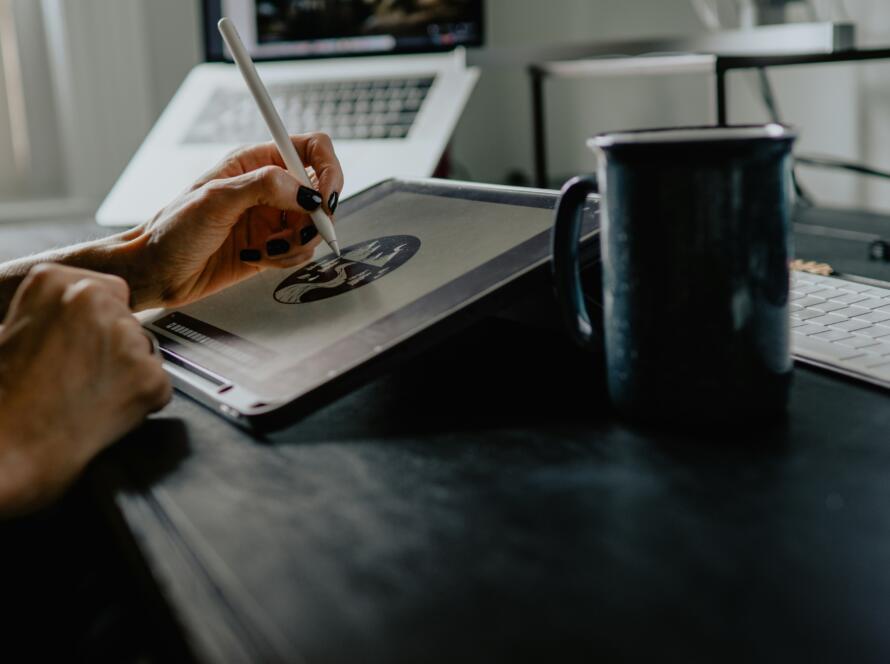Color isn’t just decoration—it’s communication. In graphic design, every color you choose tells a story, sparks an emotion, and influences how people perceive your brand. Whether you’re creating a logo, website, packaging, or business card, understanding color psychology can give your design a powerful edge.
So what does your brand color say about you? Let’s dive deep into the world of color psychology and how it shapes perception in graphic design.
What is Color Psychology?
Color psychology is the study of how different colors influence human emotions, behaviors, and decisions. Our brains subconsciously associate colors with feelings, memories, and cultural meanings. As a designer, tapping into this psychology allows you to create visuals that resonate with your audience on a deeper level.
Why Color Choice Matters in Graphic Design
- 🎯 Grabs Attention – The right color combo can stop a scroll or make a product stand out on a shelf.
- 🧠 Improves Brand Recognition – Colors increase brand recognition by up to 80%.
- ❤️ Creates Emotional Connection – Color can instantly evoke trust, excitement, calmness, or urgency.
- 🖼️ Guides User Experience – In UI/UX design, color helps users navigate, interact, and engage smoothly.
What Do Popular Colors Say?
Here’s a breakdown of what different colors typically communicate in graphic design:
Red
Emotion: Energy, passion, urgency, excitement
Best for: Brands in food, fitness, entertainment, or sales-driven industries
Examples: Coca-Cola, Netflix, YouTube
⚡ Use red when you want to create a sense of action or draw immediate attention.
Blue
Emotion: Trust, professionalism, calm, reliability
Best for: Finance, healthcare, tech, corporate brands
Examples: Facebook, PayPal, LinkedIn, IBM
💼 Blue is the most universally liked color—great for creating brand trust.
Yellow
Emotion: Optimism, warmth, creativity, happiness
Best for: Kids’ brands, lifestyle, casual or fun startups
Examples: McDonald’s, Snapchat, Ikea
☀️ Use yellow for a cheerful, positive vibe—but balance it to avoid overwhelming.
Green
Emotion: Growth, freshness, health, sustainability
Best for: Eco-friendly, wellness, food, and finance brands
Examples: Spotify, Whole Foods, Animal Planet
🌱 Green is perfect for earthy, organic, or calming brand themes.
Purple
Emotion: Luxury, wisdom, creativity, spirituality
Best for: Beauty, fashion, wellness, and tech
Examples: Cadbury, Hallmark, Twitch
👑 Purple adds elegance and uniqueness, especially when paired with gold or silver.
Black
Emotion: Power, sophistication, elegance, exclusivity
Best for: Luxury brands, fashion, premium products
Examples: Chanel, Nike, Apple (when in black theme)
🖤 Use black for sleek, minimal, and timeless design statements.
White / Neutral Tones
Emotion: Simplicity, clarity, cleanliness, modernity
Best for: Tech, health, minimalism-driven brands
Examples: Apple, Tesla, Airbnb (white space heavy design)
🤍 White space helps create a clean and breathable layout, enhancing focus.
Cultural Context Matters
Color meanings can vary based on region and culture. For example:
- Red = love in the West, but luck in China
- White = purity in the West, but mourning in parts of Asia
Always research your audience’s cultural background when designing for international brands.
How to Choose the Right Colors for Your Brand
- Define your brand personality – Are you bold, calm, playful, or elegant?
- Know your audience – What emotions do you want to evoke?
- Study your competitors – Do you want to blend in or stand out?
- Create a balanced palette – Use a mix of primary, secondary, and accent colors
- Test your color combinations – Check accessibility, contrast, and readability
Bonus: Use Color Psychology in These Areas Too
- Logo design
- Website & app UI
- Social media templates
- Business cards & stationery
- Packaging & labels
- Ad creatives & banners
Conclusion
Color isn’t just visual—it’s emotional. When used strategically, it can shape how people feel about your brand, guide their actions, and leave a lasting impression. Don’t choose colors randomly. Use them to tell your story, trigger the right emotions, and build brand loyalty.
At Jiyan Infographic, we specialize in brand design that speaks with color, clarity, and confidence.
🎨 Ready to create a brand color palette that connects?



